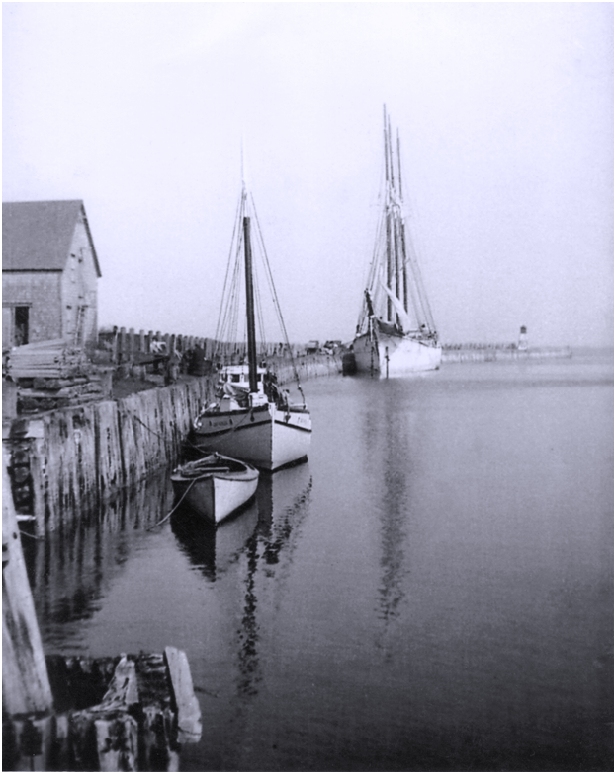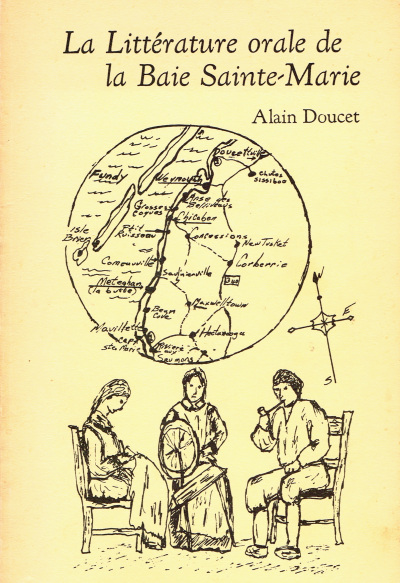Jean-Léo Melanson was born September 7, 1868 at Little Brook (Petit-Ruisseau, Baie-Sainte-Marie) to Pierre-Sixte Melanson and Genevève Thibodeau. Léo à Pierre à Charles (as he was known his entire life) was the youngest of eight children (two sisters: Fébrinie and Marie-Anne; and five brothers: Philip, Charles, Ambroise, Léander and Augustin).
Very little is known of Léo’s childhood, except that the family was very poor and it was unlikely that Léo could read or write. In 1894, Léo-Jean married Marguerite (dite Magitte) LeBlanc, the daughter of Volusien (à Cyriaque) LeBlanc and Élisabeth Belliveau, also of Little Brook (Petit-Ruisseau). Léo and Magitte had seven children: Estelle, Joseph-Élisée, Joseph-Camille, Marie-Cécile, Marie, Adolphe and Joseph-Gustave.
As the youngest son of the family, Léo was aware there was little chance of inheriting the family farm so he had to find other means of making his way in the world. It is believed his first employment was at the Boudreau mill in Comeauville, from 1882 to 1916. In this time frame, Léo worked at the Boudreau mill in Comeauville but also took leave from that work to take on private contracts. It seems to have been a good arrangement as the lumber for those projects was probably purchased at the Boudreau mill and any additional work required at the construction site may have been sent to the Comeauville mill.
It is believed the first contract undertaken by Léo was the building of a dam at Sissiboo Falls on the Sissiboo River in 1890. In spite of his young age (21) and lack of a formal education, Léo was hired as foreman for the project. The dam was still intact in 1958 when, after building further up river, the dam built by Léo and his crew needed to come down. The structure was still so strong that dynamite did not succeed it destroying it and it had to be taken apart piece by piece.
Léo Melanson was not directly involved in the construction of the first Collège-Sainte-Anne in 1890 but after the Collège was destroyed by fire in 1899, Léo was appointed Master Carpenter by Père R.P. Dagnaud (a Eudist priest) for the rebuilding of the new Collège and the Chapel.
In 1901, the residents of the inland community of Concession approached their parish priest, the same Père Dagnaud, for approval to start construction on a new church. Again, Léo Melanson was put in charge of this construction project. The church was completed in spring of 1902 and blessed on October 28, 1902. A distinguishing feature of this church in Concession, Notre-Dame-du-Mont-Carmel, is its perfectly round belfry. It is said that before Léo appeared on the scene, no one was able to do the complex calculations required to achieve this perfectly round structure and so it was done by trial and error: one piece of wood at a time was taken up to the belfry, measured and marked then taken back down for cutting. As the story goes:
“…Tout à coup, Léo, chef the chantier de construction, arrive sur les lieux. Il prend son équarre et fait les calculs nécéssaires. On coupe les bois sur les bancs à terre puis on les monte au clocher. Les morçeaux sont placés côte à côte et le clocher est parfaitement rond. Ça c’était Léo…” Source Dugas, pg 102
Translation:
“…Suddenly, Léo, the Master Carpenter, arrives on the scene. He takes his square and makes the necessary calculations. The wood is cut on benches on the ground and then taken up into the belfry. The pieces are placed side by side and the tower is perfectly round. That was Léo…”
Before the construction of the church in Concession was even completed, Père Dagnaud had plans for Léo Melanson: the building of a new magnificent church at la-Pointe-de-l’Église (Church Point).
Mr. Arthur Regnault, an architect from Rennes, France, had drawn up plans for this magnificent new church but had envisioned building it in stone: never had a building of this size been built out of wood. But wood it had to be because of the scarcity of suitable stones in the area. The plans were modified to be able to build a wooden structure and Père Dagnaud and Léo Melanson embarked on this new construction project in 1903.
A project of this magnitude required donations from all the parishioners and the expertise of many carpenters and master carpenters. Mr. Jean Fournier of Little Brook (Petit-Ruisseau), along with Léo Melanson, is credited with the success of this project. Jean Fournier had worked in the United States and had experience in building very large wooden structures. The new church was blessed August 30-31, 1905.
A partial list of construction projects undertaken by Léo Melanson after Église Sainte-Marie in Church Point was completed included some of the most beautiful homes in Clare:
* 1907 the home of Senator Willie Comeau in Comeauville (still family-owned by descendants of Senator Comeau)
* 1910-1911 the home of John McLaughlin in Church Point (now used as the home of the president of Université Sainte-Anne)
* the home of Captain Bernie Melanson in Gilbert’s Cove
* the Léon Babin home in Corberrie
* Léo was consulted on the building of the home of Dr. Philippe LeBlanc in Little Brook (Petit-Ruisseau) now a Bed and Breakfast “Le Château de la Baie”.
* the Leonard C. Comeau store in Comeauville (still a very active business)
* 1910 a college chapel in Caraquet, New Brunswick
* 1915-1917 construction of Sacred Heart Church in Doucetteville
Léo’s father-in-law, Volusien LeBlanc, owned a sawmill and in 1916, Léo bought it from Volusien and took over the management of the mill. At this point, Léo began building ships – particularly lobster fishing boats. He also took government contracts to build wharves in Prince Edward Island and Nova Scotia. At the time of the Halifax Explosion in 1917, Léo was in the process of building a wharf on the North West arm for MacMillan who later became Premier of Nova Scotia.
Léo died Nov 13, 1947 at the age of 79 years and his wife Magitte died in 1964 at the age of 90 years.
Bibliography:
Melanson, Michael. Melanson~Melançon The Genealogy of an Acadian and Cajun Family. Dracut, Massachusetts. Lanesville Publishing, 2004. pp 338-338 and 594-595.
Dugas, Albert. Léo Jean Melanson. (Léo à Charles à Pierre) Une biographie anecdotique. Pointe-de-l’Église, Nouvelle-Écosse, 2001.




